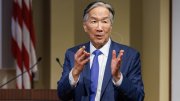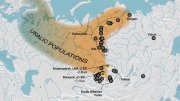“There was a longish period in the 1990s and the early part of this century when economic history was very much out of fashion, at least in history departments,” says Knowles professor of history Emma Rothschild. She has played a role in the recent revival of the field, originally established in the 1890s in Great Britain, the United States, and France. As director of the Joint Center for History and Economics, which is, as she puts it, “one center in two locations” (at Harvard and at Cambridge University), she has been shepherding new scholarly collaborations and directions.
A project on the history of energy (and climate change) seeks to widen perspectives on past economic, social, and environmental processes by studying energy use and transformation. The field has been pursued in Cambridge, England, for some 20 years, says Rothschild, and has recently seen “outstanding work,” by Harvard doctoral students looking at early responses to climate change in the nineteenth and twentieth centuries. “Climate change was then thought to be strongly associated with desertification,” she explains, “not with atmospheric change. They are very different physical processes.” Like an earlier project that elucidated the negative impacts of past economic crises on the health of millions of people—undertaken in the midst of the recession that began in 2008-2009—the study of the history of energy aims to be relevant to the concerns of the present.
The center is also undertaking a quantitative approach to historical social networks. The idea of using network analysis—including computer-generated visualizations of social networks—came from conversations with economists, says Rothschild, “in particular Ben Golub,” a postdoctoral fellow at the center who in 2015 will join the Harvard economics faculty. Rothschild first used the technique while working on a book about the Johnstones, a Scottish family with global reach. “The book was an attempt to follow the lives of all the brothers and sisters,” both those who traveled the world and those who stayed home. Several became slave owners, while others strongly opposed the practice. The project in time expanded to follow the lives of some of the Johnstone slaves as well—and it continues to grow. “It’s an interesting example of how history is becoming more open-ended,” Rothschild reflects. “I feel the project is never going to be finished, because people keep finding new things about this large, eighteenth-century family.” Ian Kumekawa ’12 (now a doctoral student in history at Harvard), who worked with Rothschild on the project, says that what really excited him about getting involved with this story of empire, slavery, and commerce was the use of network visualization “not just [as] an infographic” but as “a research tool.”
Rothschild is now studying 83 people who signed a document in eighteenth-century provincial France. “You can’t really hold the social connections among 83 people in your head,” she notes, “because it is beyond the capacity of the human social imagination. But by visualizing some of these relationships, you can see how information is likely to spread in a social network. It’s been an exciting collaboration in all sorts of ways among historians, economists, computer scientists, and others who work on visualization techniques,” but also, she emphasizes, “among very different kinds of historians.” In addition to Rothschild’s own study of poor artisans in eighteenth-century France, there are projects on ancient Rome, early-twentieth-century economists in Cambridge, England, and the spread of political information in seventeenth-century England. Despite her colleagues’ disparate interests, she says, “We’ve been finding quite a lot to talk about—it’s a different way of thinking.”









